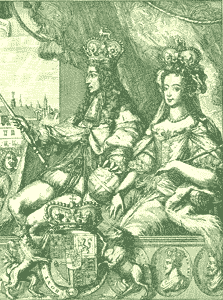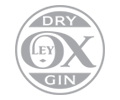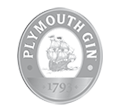 Dutch Jenever is the first cousin of English gin. Both are juniper flavoured distillates of alcohol and they share a common ancestry and a common birthplace – the Low Countries – Holland and Belgium on today’s maps but one country until the 1880s.
Dutch Jenever is the first cousin of English gin. Both are juniper flavoured distillates of alcohol and they share a common ancestry and a common birthplace – the Low Countries – Holland and Belgium on today’s maps but one country until the 1880s.
Whenever you read anything about the early history of jenever and gin, you will be told that Sylvius, Professor of Medicine at the University of Leyden was the first to perfect a juniper flavoured spirit in around 1568, used to treat kidney disorders. This is complete nonsense, a marketing wheeze dreamed up in the 1960s by an over imaginative copywriter. The problem is that the good Dr. Sylvius may well have been the first to record a formulation for distilling with juniper but he certainly wasn’t the first to distil with juniper. It’s time to put the record straight.
Distilling with juniper in Europe almost certainly goes back to the 11th century when the learned monks of Salerno in Italy were making medicinal potions by distilling a wine spirit together with various roots, berries and herbs. Because juniper grows so freely in Italy and
was known to be of therapeutic value, we can safely assume that at least one of the monks’ medicines was based on juniper. Juniper flavoured distillates made appearances at various times from then onwards, still as medicinal cordials. In monasteries and noble houses throughout Europe spirits flavoured with herbs, flowers and berries were made and used to treat ailments. Juniper cordials were particularly popular during the years of the Black Death, the epidemics of plague, which stalked Europe in the mid 14th century because juniper was believed to protect against the deadly disease. In the 15th century a son of French king Louis 1V came up with a wine flavoured with juniper called “the wine of the poor”.
In the late 15th century, in the Low Countries, juniper flavoured
spirit seems to have made the leap from the apothecary’s counter to the
tavern table fairly effortlessly. This transformation represented a
marriage of two quite distinct strands of distilling in mediaeval
Europe: one, the monastic tradition of distilling to produce spirits
for medicinal use; the other, the age-old practice in the Celtic
badlands of converting surplus grain crops into spirits to drink for
pleasure. Excise records of 1492 confirm that the Dutch were making
significant quantities of spirit from cereals, mainly rye. This spirit
was known as brandewijn (Dutch for burnt or heated wine), a catch all
term for all forms of spirit. Although it was much cheaper to distil
from grain rather than wine the resulting spirit was not a
sophisticated drink and constant experimentation was carried out to
find a way of making it more palatable. Juniper combined well with
brandewijn, grew everywhere in the Low Countries and was considered to
be restorative, particularly good for kidney problems. In the Low
Countries from this time on, jenever also called genever, geneva,
Hollands and Schiedam became the people’s drink.
The Dutch were probably the first European nation to develop a
large-scale commercial distilling industry. Between 1500 and 1700 every
sizeable town had several distilleries making jenever, spirit or
liqueurs. Foreigners claimed that it was the foul climate of the Low
Countries that made drinking so much a part of life but there were
other reasons. The innate Dutch inventiveness and love of
experimentation meant that there was virtually nothing that they would
not make into strong drink. Crucially all the necessary ingredients
were to hand. The Dutch ruled the seas and, every hour of every day,
the ships of the East and West Indies Companies unloaded cargoes of
exotic foodstuffs and spices from all over the world at the ports of
the Low Countries. Amsterdam was the pre-eminent port for
sugar and spices and soon became a centre for liqueur making. Rotterdam
was the grain port and nearby Schiedam became the hub of jenever
production.
Not only was there soon a big domestic market for jenever but there
was also a huge export trade. Dutch ships had always carried wine for
their own use on board and to trade. The Dutch invented cognac because
it was easier to transport spirits than wine. By the beginning of the
17th century hardly a Dutch ship left port without its jenever cargo
and so, wherever the Dutch went, they took jenever with them. Indeed
there are still remote shores of West Africa where 17th century jenever
stone jars are regularly unearthed.
England became a market for Dutch jenever from the 1570s onwards.
Sailors travelling between English ports and the ports of the Low
Countries brought genever back with them much as modern day travellers
acquire luxury drinks in Duty Free. Demand increased supply and ports
like London, Liverpool, Bristol and Plymouth all imported Dutch jenever
particularly when the trade in spirits from France and Germany was
interrupted during the war years in the 1630s. At that time too hundred
of English soldiers and sailors were fighting in the Low Countries.
They had been introduced to jenever via the encouraging tots given to
steady their nerves before battle. They christened it Dutch courage,
shortened jenever to gin, and brought home a taste for this new spirit
and drinking spirits in general.
The arrival of Dutch William lll on the British throne was the
catalyst for the development of a home-grown English distilling
industry. English distillers began to make gin, a product for which
there was already a substantial consumer demand and political support.
Interestingly enough large amounts of Dutch jenever continued to be
imported into Britain throughout the eighteenth and early nineteenth
centuries with official figures for 1782 showing a figure of 2.5
million gallons. Unofficially the figure would have been much bigger as
vast quantities were smuggled, often through the Isle of Man, the
centre of the smuggling trade because goods could be imported legally
into the island by paying a small tariff to the Lord of Man and then
landed illegally in the North of England, Scotland and Ireland.
In the beginning English gin tasted very like Dutch jenever and was
heavy, sweet and aromatic often flavoured with spices like cloves and
myrrh still used in modern genever production. Jenever and gin long ago
went their separate ways but, if you would like to get some idea of
what England’s national drink first tasted like, we’ve listed some
excellent jenever brands below. And the next time anybody tries to tell
you that gin was invented by Sylvius of Leyden, just smile because you
know better.
Popular Jenever Brands
- Boomsma Graanjenever
- De Kuyper Oude
- De Kuyper Jonge Graanjenever
- Notaris
- Bokma Jonge Graanjenever
- Bokma Vijf Jaren
- Floryn Jenever
- Keitel 1
- Bols Jonge
- Bols Oude
- Bols Corenwijn
Find out more about Jenever
The National Distillery Museum in Schiedam has an impressive archive
and working distillery where they make jenever in the traditional way
and sell their own brand sealed with the stamp of the Burgomeister of
Schiedam, a sign of quality. It’s open to the public, easily reached by
train from Amsterdam and well worth a visit.
National Distillery Museum
Lange Haven 74 -76
Schiedam
Tel: 0031 10 426 93 40 for opening hours
For further information on jenever brands and other Dutch spirits contact:
Productschap voor Gedistilleerde Dranken
Lange Haven 127
3111 Schiedam
Tel: 0031 10 426 9340
Email: info@pgd.nl
URL: http://www.pgd.nl




